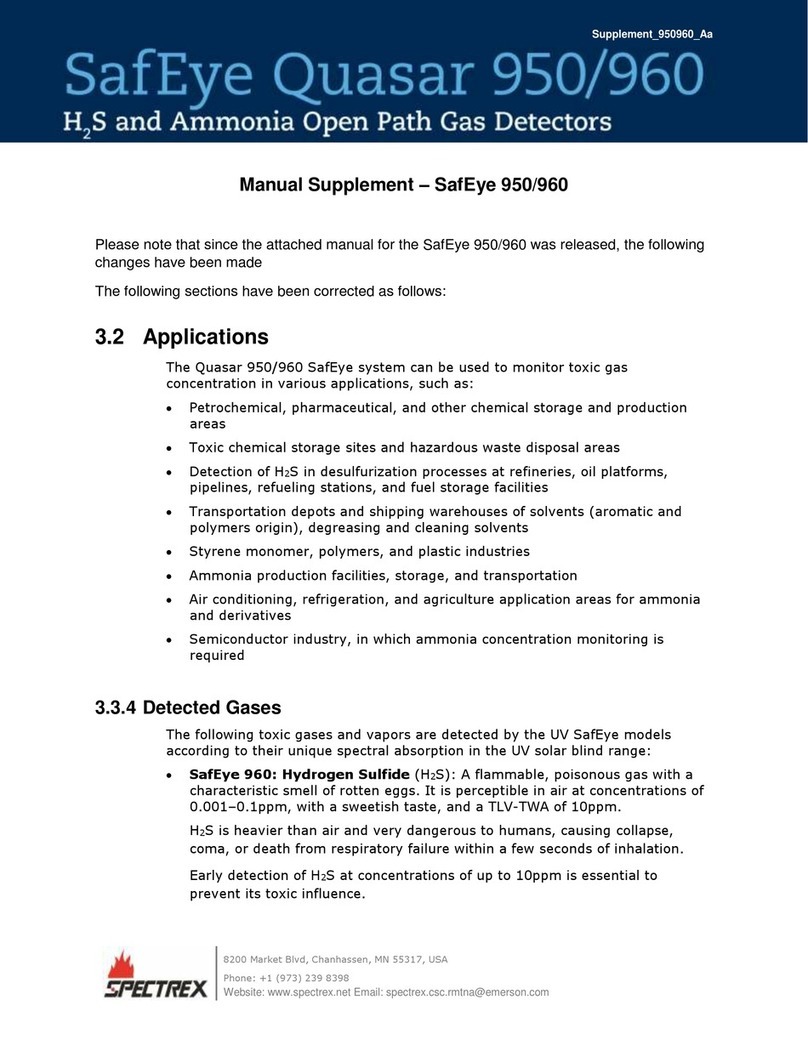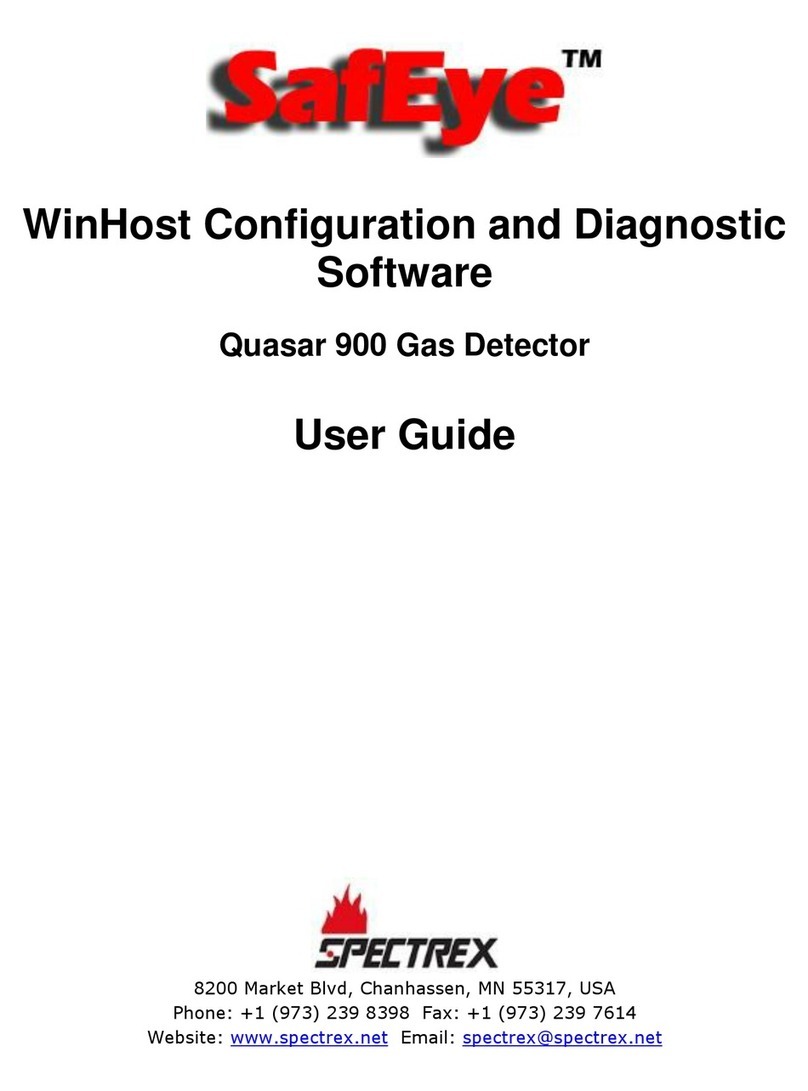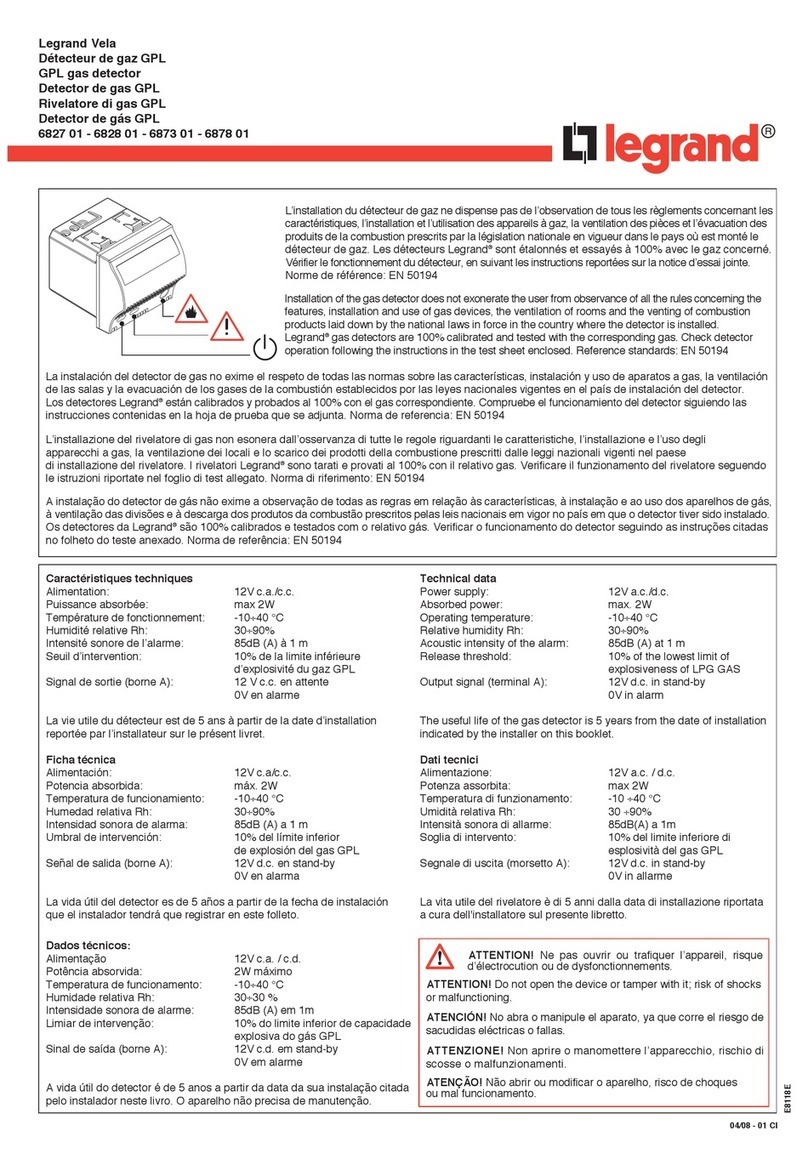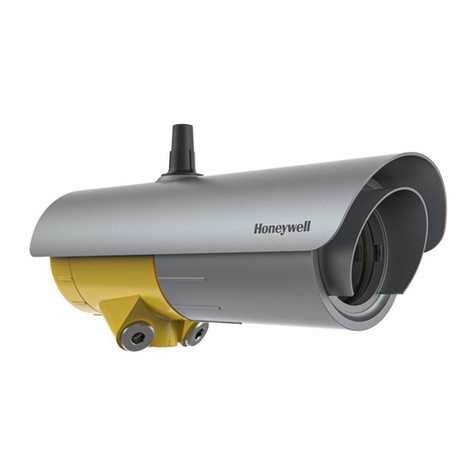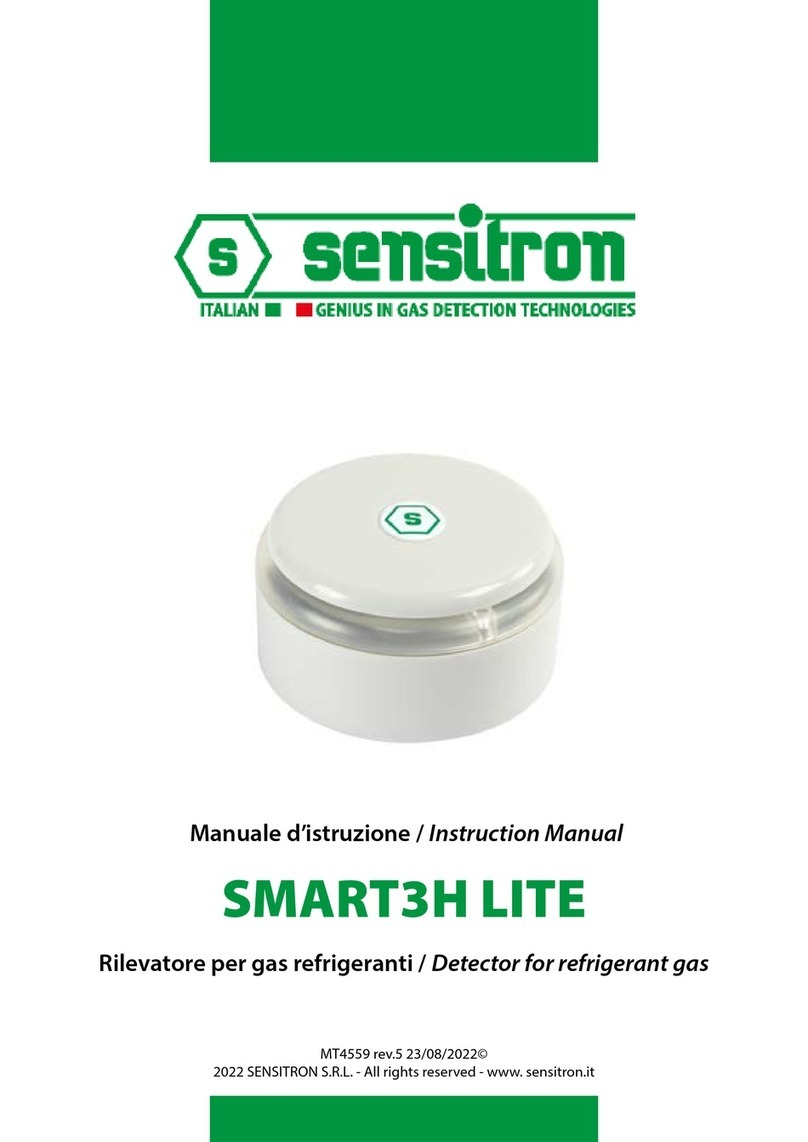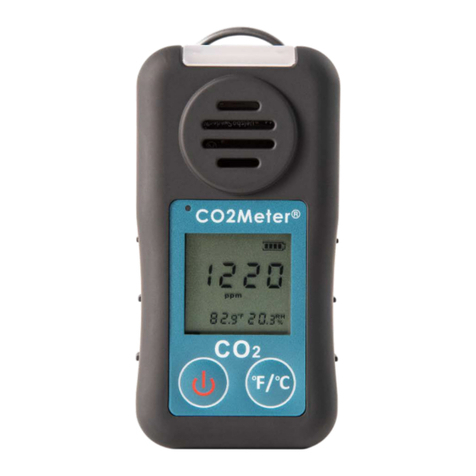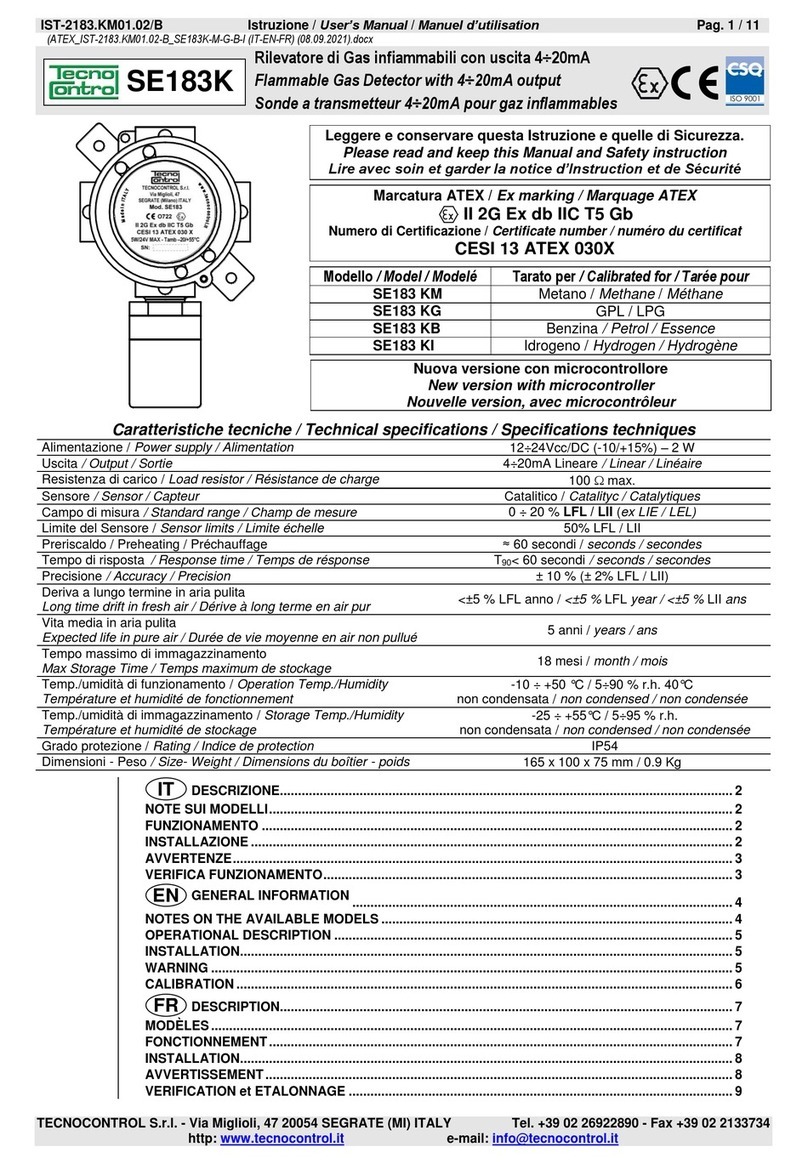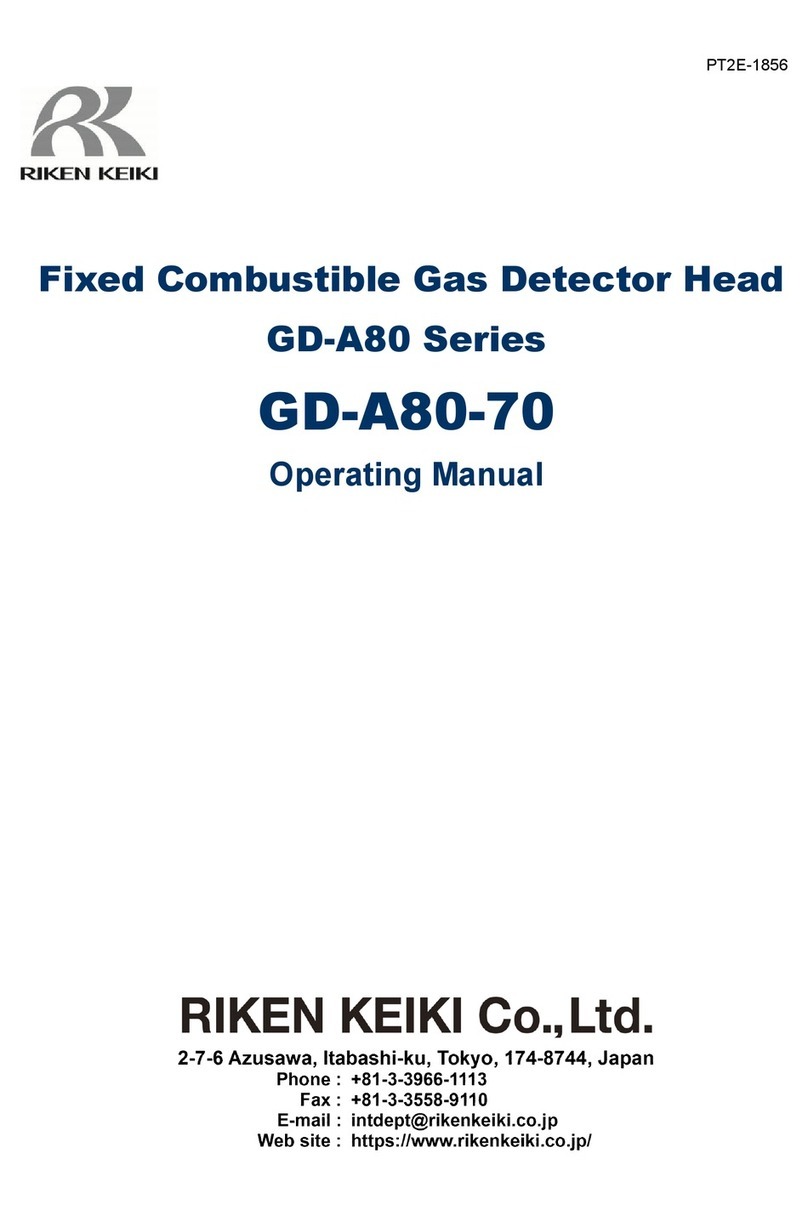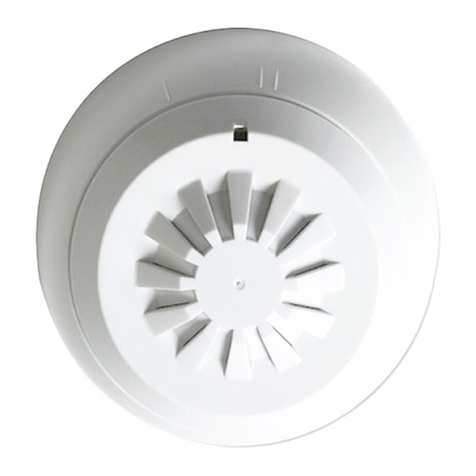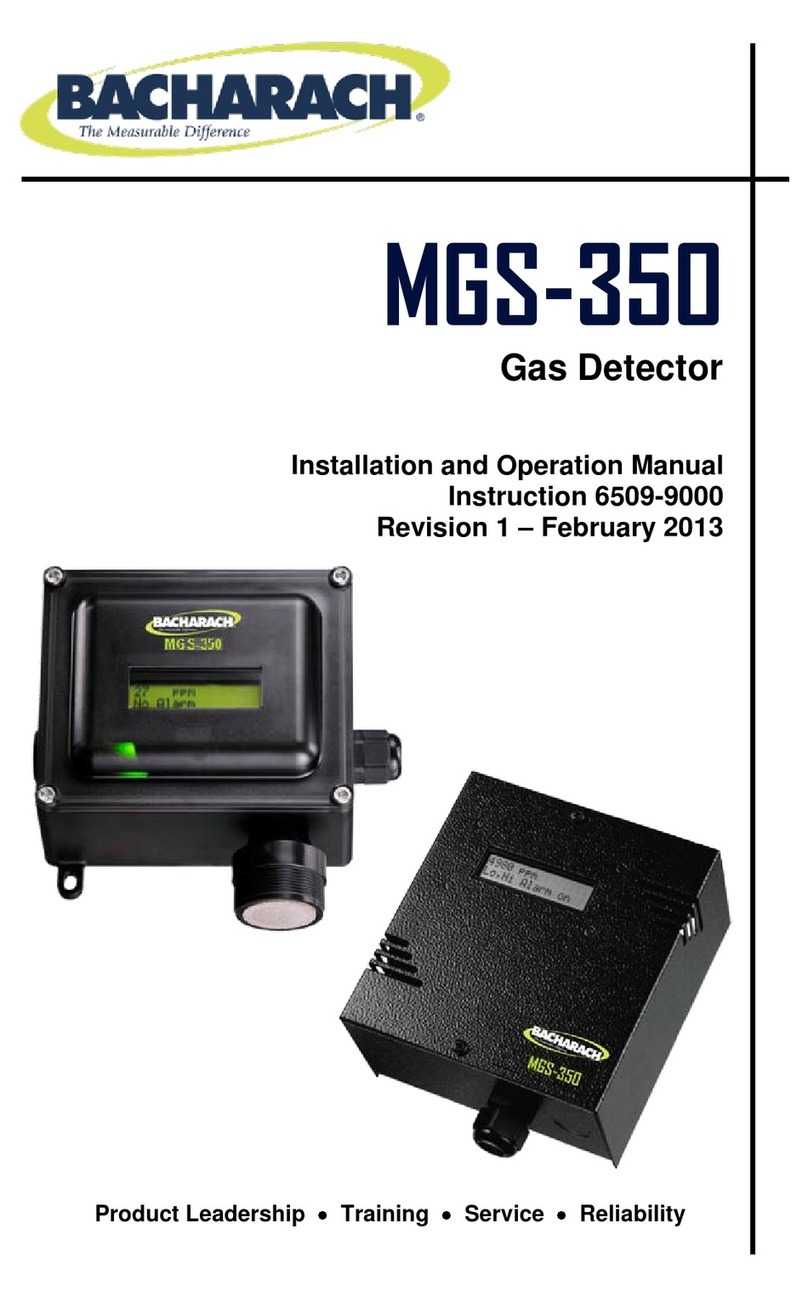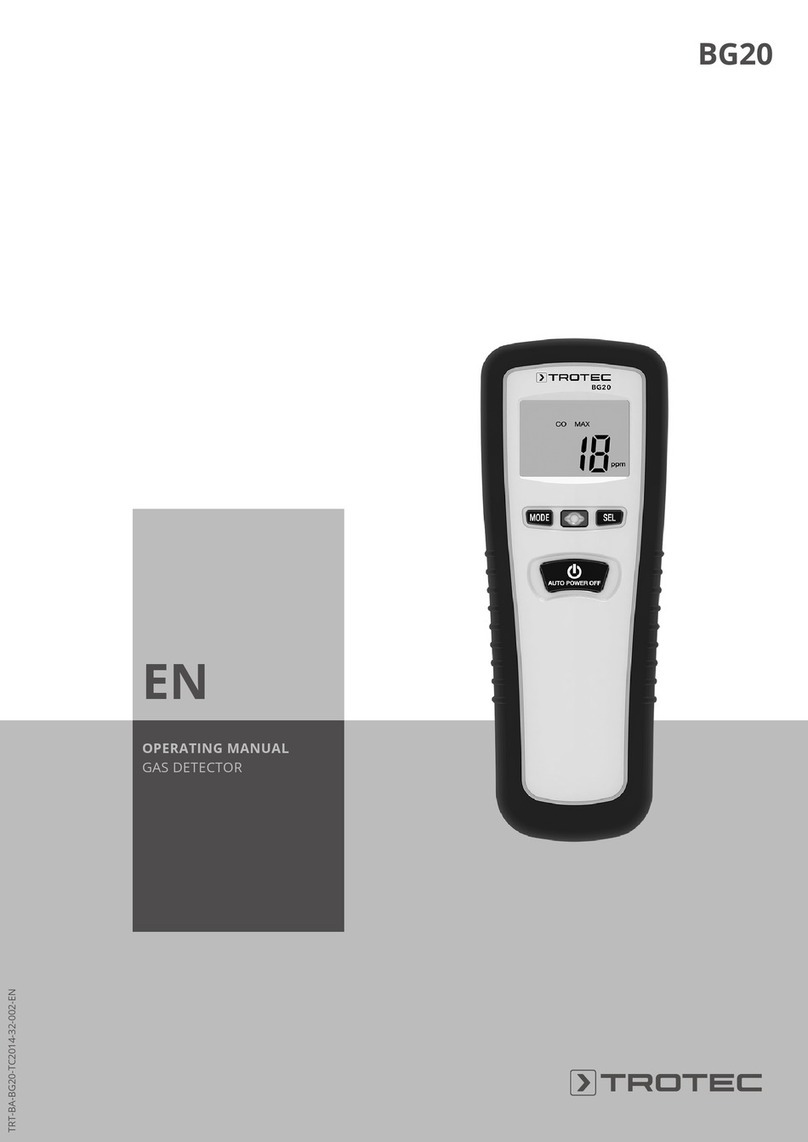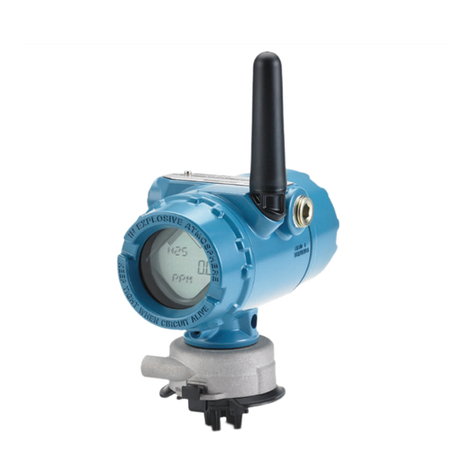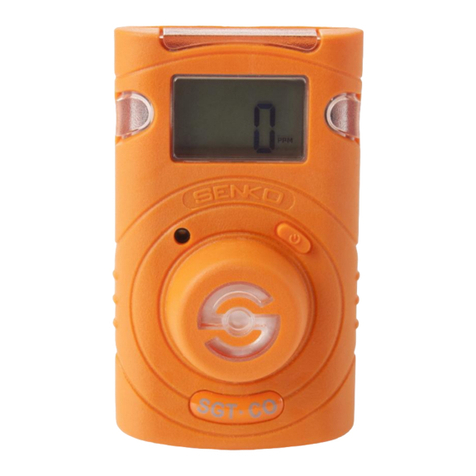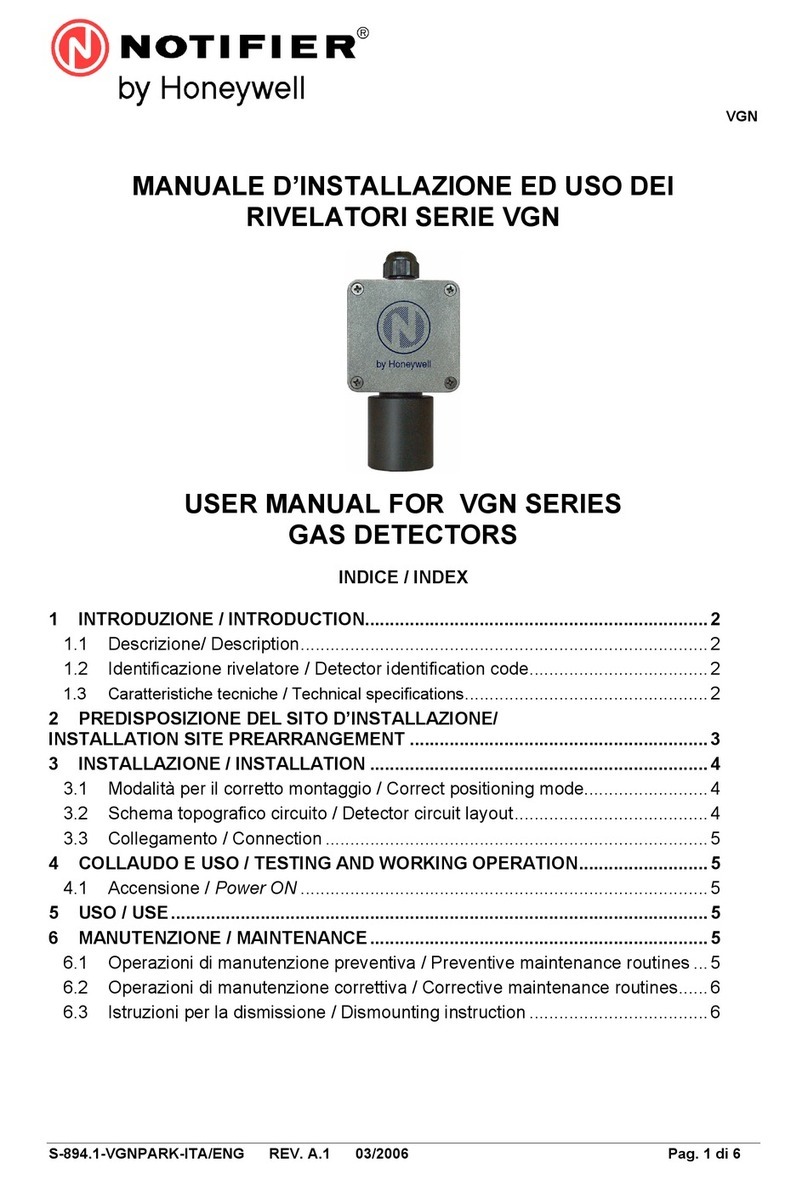
TM 888300, Rev. F, January 2015
Principle of Operation 5
The system analyzes the defined open path at the spectral bands specific to
the materials being monitored. The Automatic Gain Control (AGC) unit
compensates for environmental disturbances such as fog, rain, etc., through
a constant comparison with its dual spectral beam.
2.3.4 Detected Gases
The following toxic gases and vapors are detected by the UV SafEye models
according to their unique spectral absorption in the UV solar blind range:
Ammonia (NH3): A flammable and toxic gas that is highly irritant,
colorless, and with a pungent odor. The lower limit of human perception
is 17 ppm. Ammonia TLV-TWA is 25 ppm.
The early detection of NH3at concentrations up to 25 ppm is essential in
order to prevent its toxic effects, such as respiratory tract paralysis. In
the UV band, NH3gas has a typical strong absorption in the solar blind
range of 189 nm - 210 nm that enables its fast and reliable detection at
low concentrations.
Hydrogen Sulfide (H2S): A flammable, poisonous gas with a
characteristic smell of rotten eggs. It is perceptible in air at
concentrations of 0.001 to 0.1 ppm, with a sweetish taste, and TLV-TWA
of 10 ppm.
H2S is heavier than air and very dangerous to humans, causing collapse,
coma and death from respiratory failure within a few seconds of
inhalation.
Early detection of H2S at concentrations of up to 10 ppm is essential to
prevent its toxic influence.
In the UV band, H2S has characteristically strong absorption in the solar
blind range of 189 nm–270 nm, which enables fast and reliable detection
at low concentrations.
Aromatic Hydrocarbons: Such as Benzene, Toluene, Xylene, Styrene,
etc., have the unique “conjugated double bonding” chemical
configuration responsible for their spectral absorption in the UV band.
These substances (usually in the liquid phase) are volatile, and their
vapors are highly explosive and toxic (some of them have narcotic
effects and are considered carcinogens). The Benzene’s “paint-like” odor
is perceptible in air at 12 ppm. The TLV-TWA is 10 ppm.
In the UV band, the aromatic compounds have a typically strong
absorption in ranges of 200 nm–230 nm and 250 nm-270 nm, which
enables fast and reliable detection at low concentrations.
2.3.5 UV Source
The Xenon UV Source was originally introduced in the first SafEye
development, and was designed to overcome false alarms which were
experienced by early generations of the open path system. The new SafEye
Quasar 950/960 employs the latest generation of UV bulbs to provide even
more power and extended operation life.



















